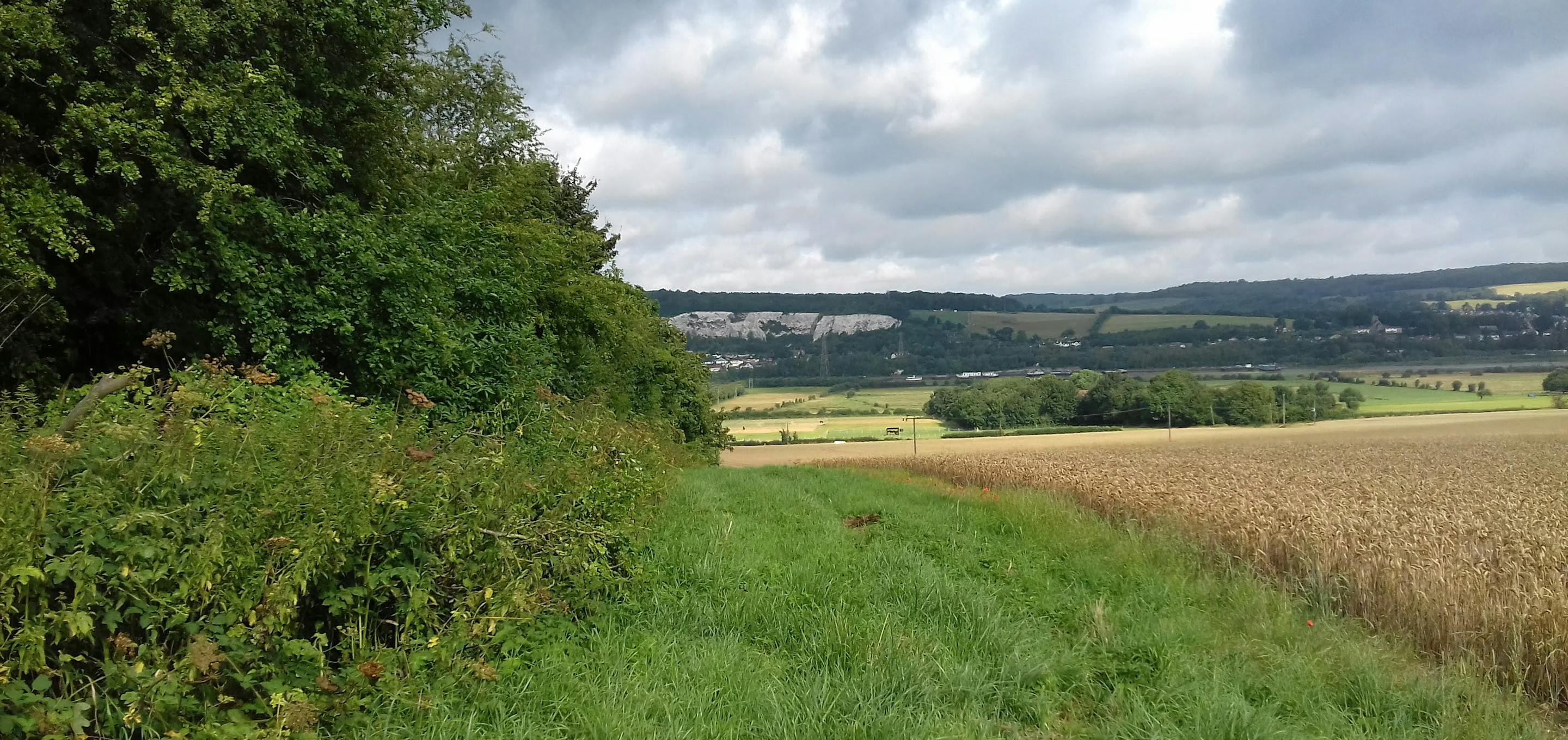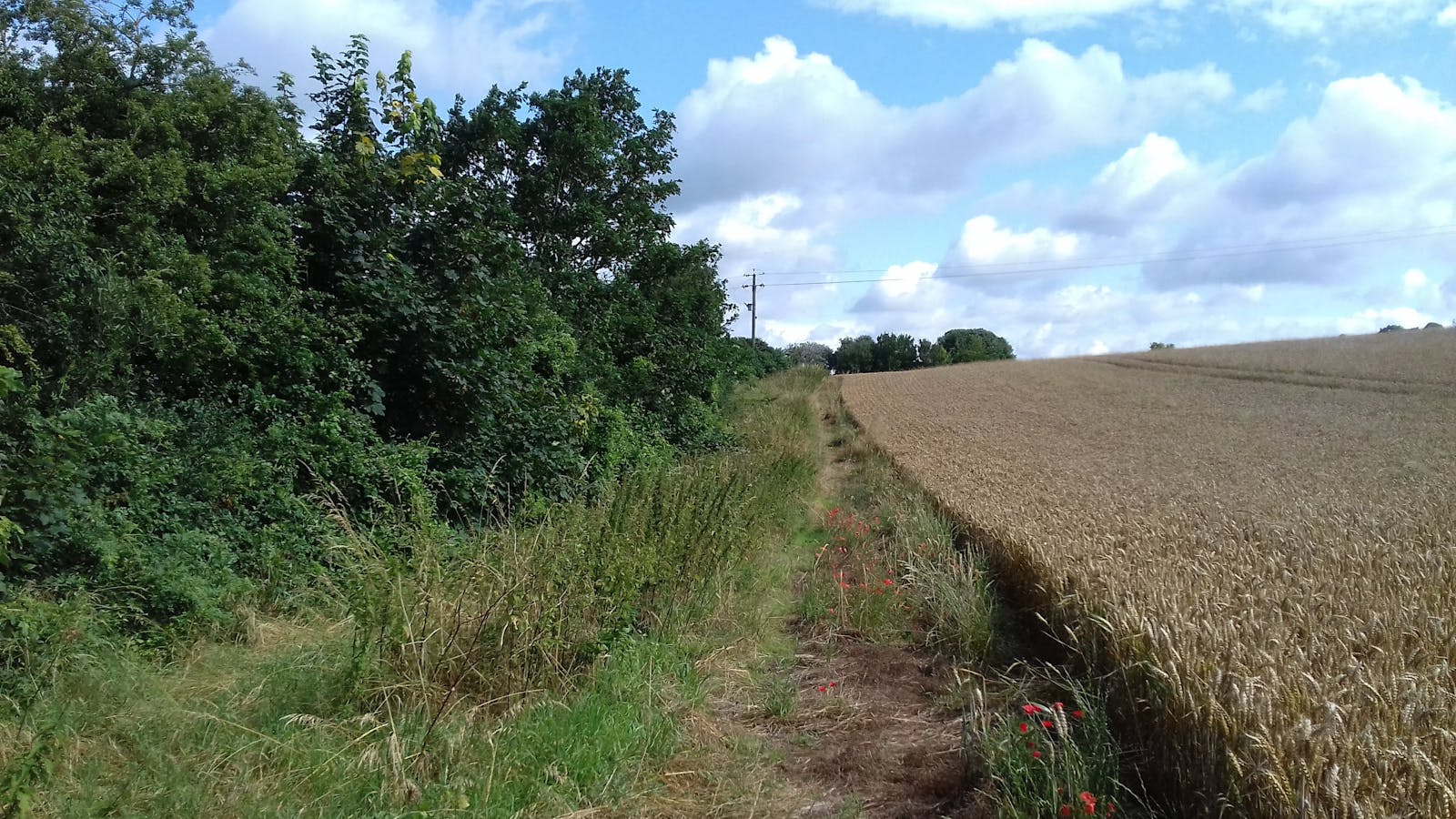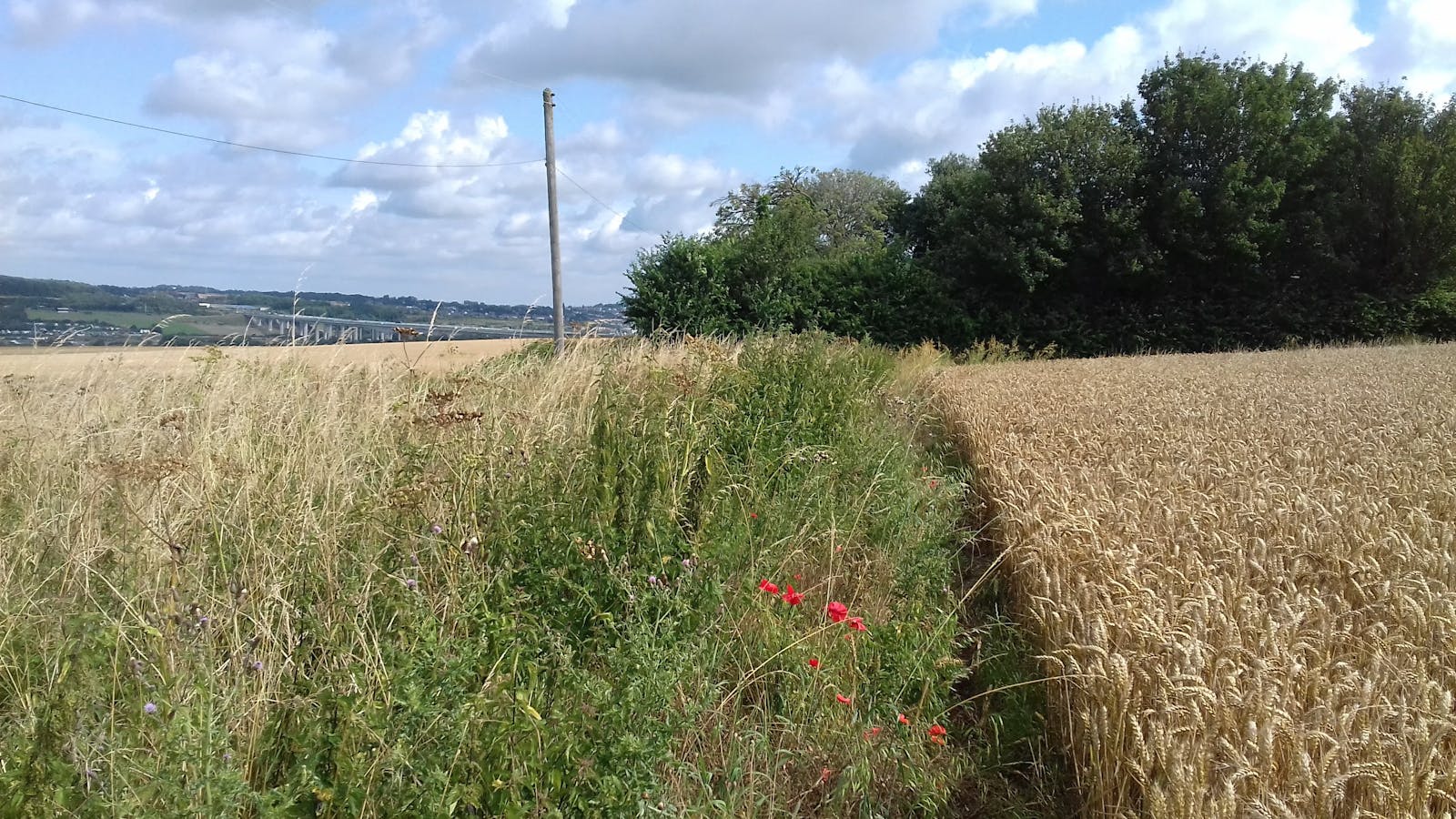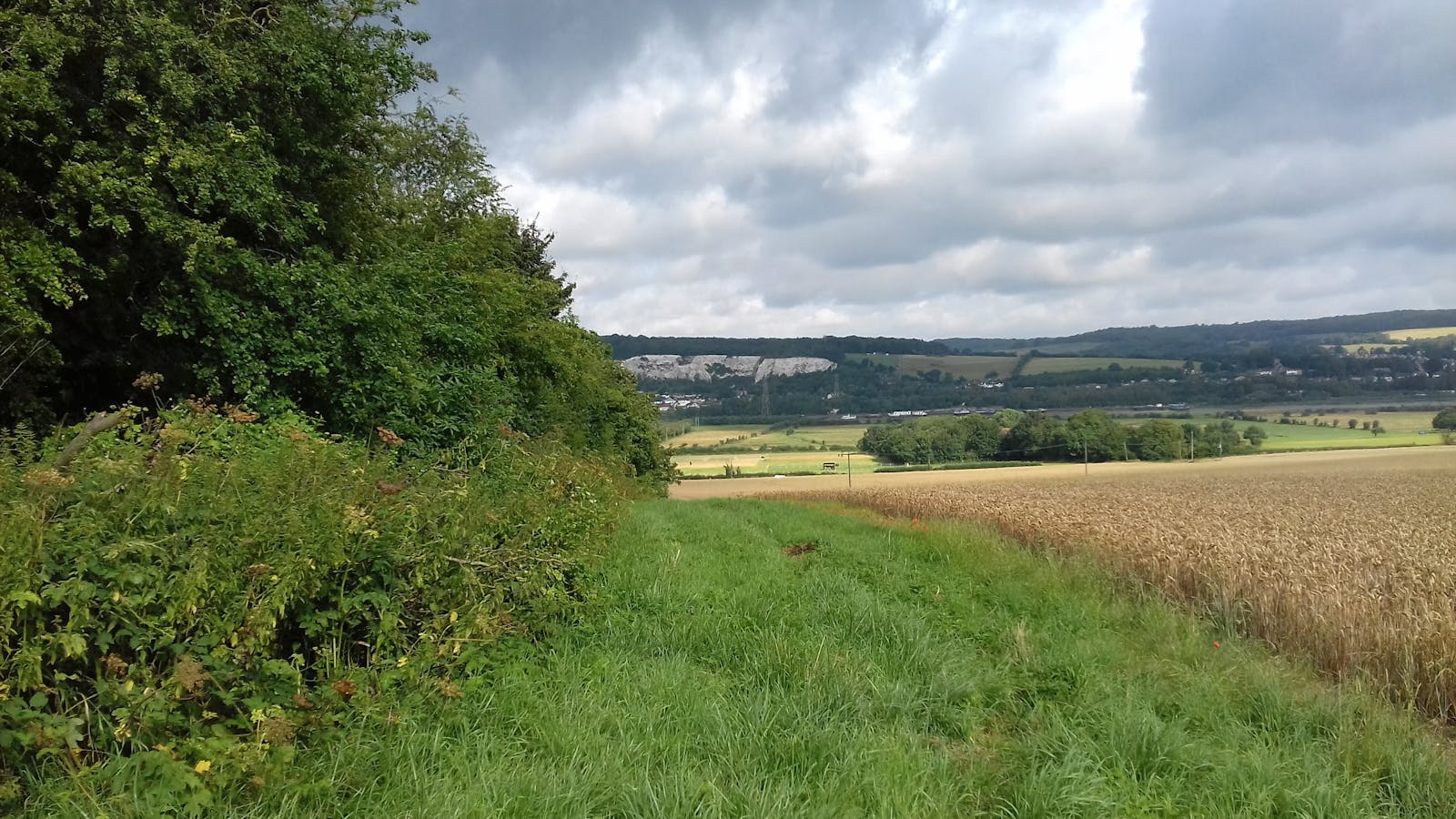
Ringshill FarmBNG offset site
Local Planning Authorities: Medway; Tonbridge and Malling
National Character Area(s): North Downs
OS grid ref: TQ 72409 65775 (Wouldham Road site); TQ 71591 62024 (Old Church Road site)
Postcode: ME1 3TP (Wouldham Road); ME1 3XY (Old Church Road)
What3words: ///shuts.payer.builds (Wouldham Road) AND ///foot.humble.bucks (Old Church Road)
Habitat units available - Surveyed 2023
A total of 240.02 habitat units and 59.43 hedgerow units are available from the following habitat types:
Grassland
Lowland calcareous grassland (High distinctiveness) - 108.09 units
Lowland meadows (Very high distinctiveness) - 5.92 units
Other neutral grassland (Medium distinctiveness) - 37.02 units
Heathland and Shrub
Mixed scrub (Medium distinctiveness) - 40.26 units
Woodland
Other woodland; broadleaved (Medium distinctiveness) - 48.19 units
Ponds and Lakes
Ponds (non-priority) - 0.53 units
Hedgerow
Species-rich native hedgerow - 58.09 units
Line of trees - 1.34 units
Site description
Ringshill Farm extends to some 153.1 ha and lies around 3 miles southwest of Rochester. It consists of two sites which straddle the village of Wouldham. Ringshill is perfectly situated to support the development of bigger, better, more joined up wildlife spaces that can be appreciated by local communities via its public access footpath.
The northern site, on Wouldham Road, is the larger of the two. The majority of the site is cereal crops with one field of temporary grass and clover leys. There are some field margins of modified grassland with a small area of broadleaved woodland to the west of the site. Artificial unvegetated unseal surface is located to the north of the site with native hedgerows scattered throughout.
Native broadleaved trees will be planted to create new woodland habitat on the part of the site adjacent to Wouldham to Detling Escarpment SSSI, helping to buffer and extend this habitat and create opportunities for natural colonisation by its rich assemblage of plants and animals.
The woodland will blend through a scrubby margin into a large chalk grassland habitat, much like its neighboring Nashenden Down, it will become home to a wide range of flowering plants, butterflies, and bees.
The southern site, on Old Church Road. The majority of the site is modified grassland with developed land and native hedgerows located along two lines of the northern field.
Its grassland will be enhanced to encourage more diversity while helping to reduce flood risk and improve water quality.
New hedgerows and lines of trees will be established throughout to provide habitat for wildlife and improve landscape connectivity.
Fill out a form at the bottom of this page or email your development's BNG metric to bngenquiries@adonisblue.org.uk for a free BNG consultation.
These units are valid for a maximum of two years, provided site conditions do not significantly change. If more than two years have lapsed between the site survey and habitat works being undertaken, an updated survey will be necessary to ensure recommendations remain valid.

Habitat Transitions


Site photos


